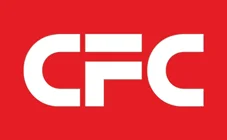5月17日凌晨,华为海思总裁何庭波给员工写信称多年芯片备胎"一夜转正",人民日报等中共媒体纷纷转发。然而,华为芯片真的可以完全替代进口吗?希望之声记者获取的一份华为资深员工的文章,或者可以让您一睹究竟:
我在华为的时候,有一段时间在中软研究院工作。其中有几个部门, 是专们做备胎的,比如尽管华为在用谷歌的安卓,但自己同时也在开发手机操作系统。感觉很不解,现代科技都是分工协作,所有的企业都是攻自己的专项,依靠其他公司提供上下流产品。大而全是一件效率很低的事情。分在备胎技术部门的兄弟,工作看不到前景,没有效益,分红也比主流部门的少,工作自然不安心,产品可想而知如何了。后来明白,任老闆知道帝国主义跟咱尿不到一个壶里,早就存了分道扬镳的心,看到中兴的下场,于是早早做了准备。反正中国人工便宜, 搞个人海战术,广泛撒网,没准就捞着一条大鱼了。
备胎是准备了,但这备胎能不能用,好不好用,就要另说了。现在硬软件都是一个复杂系统,开发不是闷在黑屋,闭门造车就能折腾出来的。产品开发要经过长期的试错。首先你得需要一个环境,就是我们常说的生态系统。有上下游产品支持,有成千成万的用户。否则你的产品都是Bug,没有用户会有耐心花钱陪你玩。
芯片制造包括指令集架构和其他设计 IP 专利,测试设备和工具。比如龙芯的 MIPS 指令架构和 Android 手机上的 ARM 指令架构。这些都需要国外厂商的授权和许可证。你可以埋头苦干四五年,发展自己的新指令架构,做到不仰人鼻息。但是如果你的独门秘笈没有其他人跟随,生态系统不能发展,上下游(编译器、操作系统、芯片方案、终端、应用程序等等)都得不到开发,最后必然是死路一条。类似的例子像中国的 3G 无线移动系统 TD-CDMA。
另外,很多应用芯片就是计算架构和计算算法的硬件化。大多架构和算法中国都没有知识产权,需要得到国外厂商的授权和许可证。
华为的麒麟是 SoC(System on a Chip)芯片,包括 CPU, GPU 和无线电基带和射频。其中 CPU 和 GPU 用的是 ARM 的架构, 基带和射频使用很多高通的技术和专利,这都需要向国外厂商购买或者得到授权,这也是麒麟不外卖的原因,因为没有授权。央视说百分之一百的中国知识产权, 绝对是忽悠。
仔细读了华为海思总裁致员工的信,一看那语言,还真是华为的风格。 风萧萧兮易水寒,壮士出征兮不复还,那是走夜路,吹口哨,自己给自己壮胆。特别是海思半导体公司关于启动所谓备胎芯片的那封信, 对于业内人士来说,就是在忽悠、打鸡血的。也许写这封信的人根本就是个外行。
设计芯片和设计线路板使用芯片,是两回事。以为自己的团队已经开发了三五成的替代芯片,或是只是设计出了核心功能芯 片,虽然功能差一些,觉得也能凑合着用。但是一个产品上的线路板, 少一个芯片就没办法生产。而一个产品少则几十,多则成百上千个芯片,其中大多都是通用芯片,是欧美公司几十年的累积经验研发出来的。我相信中国人的聪明才智,华为更是聚集了国内菁英。如果华为集中人力,花几年的时间,开发出一个管脚和功能相同的通用芯片, 这已经是很了不起的成就了。现在国内自己研发的芯片,几乎都是专用芯片 ASIC (Application-Specific Integrated Circuit),也就是根据自己产品的需求,量身定制的。这种芯片不愁销路,没有竞争对手,随着自家产品而进入市场,而其芯片本身并没有商品的竞争对手、价格、 供需等特性。
大公司对于产品选用芯片的流程几乎相同,首先设计所用的元器件(包括芯片、电阻、电容器、晶振、二极管等等)都需要从 AVL(Approval Vendor List)的厂家中选取,除了保障产品质量,还有一 点就是保障供应的可靠连续性。除此之外,这些元器件大多需要 second source, 就是管脚功能一模一样的第二、第三个厂家。只有极 个别的可以例外,如 Intel 的 CPU、PCH,Broadcom、Marvell 的通 信芯片系列等。除了它们的芯片提供主要功能,独一无二的之外,还有就是它们都是芯片大厂,可靠性有保障。
对于其它辅助功能的芯片, 虽然有两三个厂家,但也常碰到芯片 EOL(end of life)的通知,这时候通常根据自己产品预计生产的年限和所需量做一次性的 LTB (last time buy)。当然如果买的芯片不够,或预计自己的产品的生命周期在几年内都不会结束,那么这时则需要找功能类似的芯片,修改原理图和线路板,同时也要修改 BOM(build of material) 。
等新的线路板生产回来后,还需各种测试(dvt,dmt,emi?)以及后续的 report,快则两三个月,慢则半年。这还只是少一个芯片,并能找到类似功能的情况。如果找不到类似功能的芯片,那么这个产品就可以洗洗睡了。
对于华为这样一个使用大量通用芯片的公司,断芯就意味着断粮断水。 海思是绝无丝毫可能设计出满足华为产品的全部芯片,甚至于连一半所需芯片也设计不出来。如果误以为海思把华为所需的关键核心芯片的备胎设计出来,就可以救华为,那就是太无知了。少了不起眼的辅助芯片,如供电芯片、桥芯片、数模转换芯片等等,就像少了空气一 样,虽然平常不觉得它存在,但一旦缺失,就会窒息而死。
所以只要美国断芯(美国占有全世界高端芯片百分之八十以上), 华为是百分之九十九死定。那百分之一生存的可能,就是中国闭关锁国。对了,还忘了说芯片设计辅助软件,美国在这方面几乎垄断了。
现代每个电子产品都是一个系统,包括几万到几十万个芯片。一个公司不可能全部自己开发所有的芯片,特别是通用芯片,必须依靠其他专业厂家。从经济上说,也是不合算的。世界上最有钱的苹果公司, 为了基带,不得不跟高通和解。而半导体领域的老江湖英特尔,能造出世界上最好的 CPU,却造不出一个兼容性没有问题的基带。华为可能在一些 ASIC 和少量通用芯片上开发备胎,但绝不可能,也不会在所有的通用芯片上自己开发备胎。一个产品只要被断供 5%的芯片, 找不到其他厂商的替代品,肯定玩完。至于大部分智能手机制造商之 所以使用安卓操作系统,是因为其广泛的使用人数和完整的应用生态系统。过去包括三星电子在内的几乎所有智能手机制造企业都曾投入巨资开发代替安卓的操作系统,但无一例外,全部失败了。任老闆要所有芯片、软件、操作系统全部自主研发,那真是要创造人类科技史上的奇迹了。
我在华为的时候,有一段时间在中软研究院工作。其中有几个部门, 是专们做备胎的,比如尽管华为在用谷歌的安卓,但自己同时也在开发手机操作系统。感觉很不解,现代科技都是分工协作,所有的企业都是攻自己的专项,依靠其他公司提供上下流产品。大而全是一件效率很低的事情。分在备胎技术部门的兄弟,工作看不到前景,没有效益,分红也比主流部门的少,工作自然不安心,产品可想而知如何了。后来明白,任老闆知道帝国主义跟咱尿不到一个壶里,早就存了分道扬镳的心,看到中兴的下场,于是早早做了准备。反正中国人工便宜, 搞个人海战术,广泛撒网,没准就捞着一条大鱼了。
备胎是准备了,但这备胎能不能用,好不好用,就要另说了。现在硬软件都是一个复杂系统,开发不是闷在黑屋,闭门造车就能折腾出来的。产品开发要经过长期的试错。首先你得需要一个环境,就是我们常说的生态系统。有上下游产品支持,有成千成万的用户。否则你的产品都是Bug,没有用户会有耐心花钱陪你玩。
芯片制造包括指令集架构和其他设计 IP 专利,测试设备和工具。比如龙芯的 MIPS 指令架构和 Android 手机上的 ARM 指令架构。这些都需要国外厂商的授权和许可证。你可以埋头苦干四五年,发展自己的新指令架构,做到不仰人鼻息。但是如果你的独门秘笈没有其他人跟随,生态系统不能发展,上下游(编译器、操作系统、芯片方案、终端、应用程序等等)都得不到开发,最后必然是死路一条。类似的例子像中国的 3G 无线移动系统 TD-CDMA。
另外,很多应用芯片就是计算架构和计算算法的硬件化。大多架构和算法中国都没有知识产权,需要得到国外厂商的授权和许可证。
华为的麒麟是 SoC(System on a Chip)芯片,包括 CPU, GPU 和无线电基带和射频。其中 CPU 和 GPU 用的是 ARM 的架构, 基带和射频使用很多高通的技术和专利,这都需要向国外厂商购买或者得到授权,这也是麒麟不外卖的原因,因为没有授权。央视说百分之一百的中国知识产权, 绝对是忽悠。
仔细读了华为海思总裁致员工的信,一看那语言,还真是华为的风格。 风萧萧兮易水寒,壮士出征兮不复还,那是走夜路,吹口哨,自己给自己壮胆。特别是海思半导体公司关于启动所谓备胎芯片的那封信, 对于业内人士来说,就是在忽悠、打鸡血的。也许写这封信的人根本就是个外行。
设计芯片和设计线路板使用芯片,是两回事。以为自己的团队已经开发了三五成的替代芯片,或是只是设计出了核心功能芯 片,虽然功能差一些,觉得也能凑合着用。但是一个产品上的线路板, 少一个芯片就没办法生产。而一个产品少则几十,多则成百上千个芯片,其中大多都是通用芯片,是欧美公司几十年的累积经验研发出来的。我相信中国人的聪明才智,华为更是聚集了国内菁英。如果华为集中人力,花几年的时间,开发出一个管脚和功能相同的通用芯片, 这已经是很了不起的成就了。现在国内自己研发的芯片,几乎都是专用芯片 ASIC (Application-Specific Integrated Circuit),也就是根据自己产品的需求,量身定制的。这种芯片不愁销路,没有竞争对手,随着自家产品而进入市场,而其芯片本身并没有商品的竞争对手、价格、 供需等特性。
大公司对于产品选用芯片的流程几乎相同,首先设计所用的元器件(包括芯片、电阻、电容器、晶振、二极管等等)都需要从 AVL(Approval Vendor List)的厂家中选取,除了保障产品质量,还有一 点就是保障供应的可靠连续性。除此之外,这些元器件大多需要 second source, 就是管脚功能一模一样的第二、第三个厂家。只有极 个别的可以例外,如 Intel 的 CPU、PCH,Broadcom、Marvell 的通 信芯片系列等。除了它们的芯片提供主要功能,独一无二的之外,还有就是它们都是芯片大厂,可靠性有保障。
对于其它辅助功能的芯片, 虽然有两三个厂家,但也常碰到芯片 EOL(end of life)的通知,这时候通常根据自己产品预计生产的年限和所需量做一次性的 LTB (last time buy)。当然如果买的芯片不够,或预计自己的产品的生命周期在几年内都不会结束,那么这时则需要找功能类似的芯片,修改原理图和线路板,同时也要修改 BOM(build of material) 。
等新的线路板生产回来后,还需各种测试(dvt,dmt,emi?)以及后续的 report,快则两三个月,慢则半年。这还只是少一个芯片,并能找到类似功能的情况。如果找不到类似功能的芯片,那么这个产品就可以洗洗睡了。
对于华为这样一个使用大量通用芯片的公司,断芯就意味着断粮断水。 海思是绝无丝毫可能设计出满足华为产品的全部芯片,甚至于连一半所需芯片也设计不出来。如果误以为海思把华为所需的关键核心芯片的备胎设计出来,就可以救华为,那就是太无知了。少了不起眼的辅助芯片,如供电芯片、桥芯片、数模转换芯片等等,就像少了空气一 样,虽然平常不觉得它存在,但一旦缺失,就会窒息而死。
所以只要美国断芯(美国占有全世界高端芯片百分之八十以上), 华为是百分之九十九死定。那百分之一生存的可能,就是中国闭关锁国。对了,还忘了说芯片设计辅助软件,美国在这方面几乎垄断了。
现代每个电子产品都是一个系统,包括几万到几十万个芯片。一个公司不可能全部自己开发所有的芯片,特别是通用芯片,必须依靠其他专业厂家。从经济上说,也是不合算的。世界上最有钱的苹果公司, 为了基带,不得不跟高通和解。而半导体领域的老江湖英特尔,能造出世界上最好的 CPU,却造不出一个兼容性没有问题的基带。华为可能在一些 ASIC 和少量通用芯片上开发备胎,但绝不可能,也不会在所有的通用芯片上自己开发备胎。一个产品只要被断供 5%的芯片, 找不到其他厂商的替代品,肯定玩完。至于大部分智能手机制造商之 所以使用安卓操作系统,是因为其广泛的使用人数和完整的应用生态系统。过去包括三星电子在内的几乎所有智能手机制造企业都曾投入巨资开发代替安卓的操作系统,但无一例外,全部失败了。任老闆要所有芯片、软件、操作系统全部自主研发,那真是要创造人类科技史上的奇迹了。

